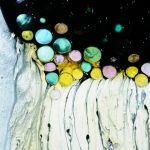I have a confession. I’ve become fascinated with Dr. Brené Brown over the summer. A bit of a crush, truth be told. I’ve read 3 of her books now—Rising Strong, Daring Greatly, and I Thought It Was Just Me (But It Isn’t). A self described “shame researcher”, Brené has unearthed a trove of wisdom around what happens when we allow ourselves to be vulnerable, or as she puts it, to take off our masks and “show up and be seen”. Those of us who are good at this, she terms the “whole hearted”.
Shame, the shadow underbelly of vulnerability, is also a big topic of her research, which has involved interviews with hundreds of people over many years. This research has brought to light a trait in some subjects she calls “shame resilience”; this is what allows some people to move through shame (which is destructive and poisonous), and into vulnerability (which is ultimately positive, and constructive). Most interestingly, she has noted that vulnerability is the birthplace of innovation, creativity and change—all desirable things in the corporate sector, especially in the world of design. I know that Brené’s work will continue to resonate with my ever evolving views on the creative process, and in my postings here. There’s a few things her work helped me to consider in a deeper way:
Brené says that being vulnerable means risk. Often it means going “all in”, despite knowing you could fail. Without the risk intrinsic in creating something new and the possibility of looking foolish, there can be no creative spark. This brings me to a question that I have been trying to answer for myself: is it better for designers to specialize in a particular vertical or design problem? Or is this familiarity counter-intuitive to vulnerability, and therefore destructive to creative innovation?
In the design community, it’s not uncommon for clients (or their agents) to ask if you’ve ever designed a very specific type of thing (no big surprise that it’s precisely the thing they are looking to have designed)—examples might be, say, an application flow that books a complex travel plan, or a software application for data visualization, or content for an e-learning platform. On the more fun & exciting side of the design continuum, it might be a music festival poster, or an infographic exploring Beyonce’s involvement in the Illuminati, or perhaps an underwater ringtone for dolphins (I would love that assignment). My belief is that past experience should matter far less then the rigors and adaptability of the individual designer’s creative process—and the broader the base of experiences a designer has had looking at the world with a “beginner’s mind”, the better. A design thinker’s ability to holistically consider the many facets of human experience, business goals, and other disparate points of data, their ability to effectively research, distill and discern what matters from what doesn’t, and use not only factual information but more importantly gut intuition and creativity in order to effectively balance these things on the head of a pin, and then iterate towards greatness—this is what an elevated design process looks like. Beyond this, what designers should really strive for is making a difference in the world—creating something better then the last person who looked at that particular problem. Often the impetus for this creative ability lies in being ignorant or skeptical of that which others might take for granted as gospel truth; or conversely, in noticing connections that those with dulled sensitivities (due to overexposure) may have overlooked.
The reason why the askers of this question preference the specific experience of having designed the very thing they need, is because there’s risk intrinsic to great design, and it’s risk that is often considered to be something we can (and should) eliminate from the design process. But if you eliminate discovery, curiosity and chance, what really is there left to “design”? Aren’t you better off just hiring a “copyist” instead of a designer? Is there a difference?
It’s often pointed out that Steve Jobs never invented anything in his life, he was “merely” good at synthesizing ideas that came from the world around him, and putting those same pieces together in a more elegant and therefore more desirable way. To a large degree, all designed experiences, objects, and “inventions” are really just varying degrees of theft—old ideas, simply iterated upon and adapted into new realms of experience. The problem with people who only stay with specific types of problems or ideas is that once they learn how to do something a certain way, it becomes hard wired and predictable. It’s much more difficult to invent things when you skip over the messy and unpredictable process of discovery and play, in favor of the known path you or someone else has already taken before. Truly superior design that is on target and effective is almost always the result of having taken a fresh approach, with a deep understanding of creativity and process, but without the baggage of assumption and risk mitigation which can stifle creativity. This is what makes an audience sit up and take notice, and what changes the world, little by little.



